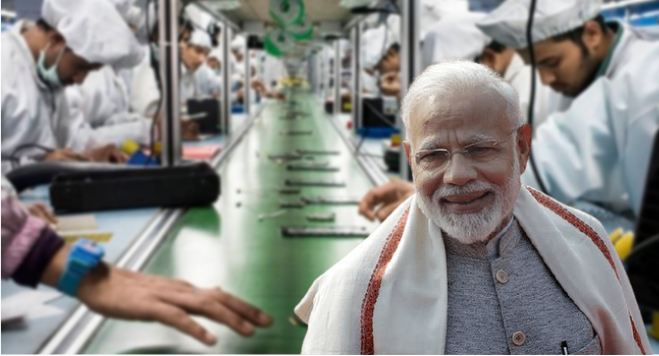- For the last three decades since economic liberalization, India had a very peculiar kind of economic growth, driven by the services sector and high-tech industries.
- Indian expanded its services sector exponentially in the last 3 decades
- The Modi government must be given credit for preparing hard infrastructure (roads, ports, electricity) and putting the necessary reforms like GST, Insolvency and Bankruptcy Code (IBC) in place.
- India is an emerging leading destination for manufacturing.
For the last three decades since economic liberalization, India had a very peculiar kind of economic growth, driven by the services sector and high-tech industries. The historical experiences of most of the countries that industrialized were very different – they went from agricultural societies to industrialized ones. The technological advancement was gradual from textile and coal in the 1750s to slowly moving to atomic energy and fighter jets in the 1950s.
The Western countries completed this process of industrialization over a period of more than 200 years and East Asian countries completed the whole cycle within 50 years.
On the other hand, Indian expanded its services sector exponentially in the last 3 decades, so experiencing a kind of growth experienced by advanced economies, not of an economy transitioning from agriculture to industry.
The reason behind this peculiar growth was the lack of infrastructure and primary education, which are two essential ingredients for any economy to become a manufacturing powerhouse. However, in the last three decades, the problem of education and infrastructure has been solved and the country is all set for growth in the manufacturing sector.
So, one can argue that like the country experienced a boom in the services sector in the last three decades, the next three decades will be dominated by manufacturing.
The Modi government must be given credit for preparing hard infrastructure (roads, ports, electricity) and putting the necessary reforms like GST, Insolvency and Bankruptcy Code (IBC) in place. And with China plus one strategy of the global coupled with Production Linked Incentives is providing the necessary impetus for Indian manufacturing to pick up.
The early signs of the rising manufacturing sector are already visible with exports rising to 400 billion dollars in FY 22 from being stagnant around 300 billion dollars for the decade. Companies like Apple and Samsung are taking the benefit of the PLI scheme and surpassing targets set by the government. The two electronics giants of manufactured smartphones worth 5 billion dollars in FY 22, surpassing the PLI target by almost 50 per cent.
India is an emerging leading destination for manufacturing. Sectors like Electronics, IT hardware, Textile and apparel are picking up pace, thanks to the conducive environment and PLI scheme.
“The leading global value chains (GVC) firms have got off to a blazing start. Besides Pegatron and Bharat FIH which are now gearing up, the big three — Wistron, Pegatron and Samsung — will achieve significant production of $5 billion in 2022,” Pankaj Mohindroo, Chairman of the India Cellular and Electronics Association (ICEA), told IANS.
Samsung and Apple are exporting handsets and other electronics manufacturing in India to countries like the United Kingdom, Japan, Netherlands, Germany, UAE, Russia, and South Africa.
In a decade, Made in India brand is expected to be as popular as Made in Japan used to be in the 1970s and 1980s and Made in China in the 1990s and 2000s. Apart from the electronics industry, a lot of investment is coming in the textile sector from European companies. The European companies, which preferred to manufacture in China given the availability of raw material and cheap labour, are now turning to India because the country has even cheaper raw material as well as labour.
The demographic dividend (low dependency ratio and high availability of low skilled workforce) that India enjoys today will last for another two to three decades and this will surely transform the economy of the country, making it the largest country by GDP by 2050. The last three decades were defined by the manufacturing sector and the next three will be defined by the manufacturing prowess of the country. And the reforms initiated by the Modi government will be duly credited for this upsurge.































